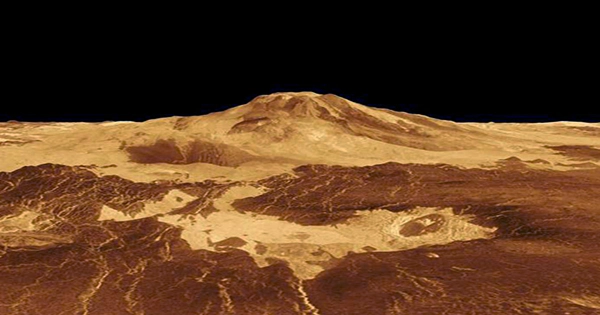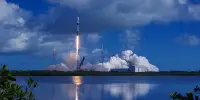According to a recent study, Venus appears to be experiencing volcanic activity, providing compelling evidence to resolve the lingering question of whether Earth’s sister planet is presently experiencing eruptions and lava flows.
Venus resembles Earth in terms of size and mass but varies significantly from it in that it lacks plate tectonics. The main sites of volcanic activity are along the edges of the Earth’s shifting surface plates.
Robert Herrick, a research scientist at the University of Alaska Fairbanks Geophysical Institute, has discovered a nearly 1-square-mile volcanic vent that evolved and grew over the course of eight months in 1991.
Volcanic activity, whether through an eruption at the vent or movement of magma beneath the vent that causes the vent walls to collapse and the vent to enlarge, is linked to changes on this scale on Earth.
The study was released in the magazine Science today, on March 15.
Herrick looked at pictures from the first two imaging rounds of NASA’s Magellan space probe in the early 1990s. The study notes that until recently, it took too much time to compare digital images in order to discover new lava flows. Few scientists have therefore looked for feature development in Magellan data.

“The Magellan data has really only been accessible at full resolution, mosaicked and readily manipulable by an investigator with a normal personal workstation in the last decade or so,” Herrick said.
The new study concentrated on a region that is home to Venus’ two biggest volcanoes, Ozza and Maat Mons.
Ozza and Maat Mons are similar in size to the planet’s largest volcanoes, but Herrick noted that they are more dispersed due to their lower slopes.
The expanded vent that suggests volcanic activity can be found at Maat Mons.
Herrick observed a change to a vent on the north side of a domed shield volcano that is a part of the Maat Mons volcano when he compared a Magellan image from mid-February 1991 with a mid-October 1991 image.
The vent had expanded from a roughly 1 square mile circular structure to a roughly 1.5 square mile irregular shape.
The later picture shows that the vent was almost completely filled and that its walls had shrunk to only a few hundred feet high. While it is unknown whether the contents were liquid or cooled and solidified during the eight months between the images, the experts hypothesize that a lava lake developed in the vent during that time.
One warning is provided by the researchers: it’s possible that the growth was brought on by a nonvolcanic, earthquake-triggered collapse of the vent’s walls. However, they point out that on Earth’s volcanoes, vent collapses of this size have always been followed by nearby volcanic eruptions; magma withdraws from beneath the vent because it is moving elsewhere.
Venus’ surface is geologically young, particularly when compared to all other rocky entities aside from Earth and Jupiter’s moon Io, according to Herrick.
The estimates of how frequently eruptions might happen on Venus, he added, “have been speculative, varying from several large eruptions per year to one such eruption every several or even tens of years.
Herrick compares what is known about Mars and Jupiter’s moon Io to what is unknown about Venusian volcanism.
Every time we’ve observed Io, numerous ongoing eruptions have been captured on camera, he said.
According to Herrick, comparatively recent lava flows show Mars is still volcanically active on a geological time scale.
However, he added, “Nothing has happened in the 45 years that we have been observing Mars, and most scientists believe that you’d need to observe the surface for a few million years to have a good chance of seeing a new lava flow.
According to Herrick’s study, Venus is now among the few bodies in our solar system that are volcanically active.
Now that there are at least a few eruptions annually, we can state that Venus is currently experiencing volcanic activity, he added. “We should see some activity happening while the two upcoming orbital missions are gathering images, and we can anticipate that the upcoming Venus missions will observe new volcanic flows that have occurred since the Magellan mission ended three decades ago.”
The simulation for the study was done by co-author and Jet Propulsion Laboratory of NASA employee Scott Hensley.
















